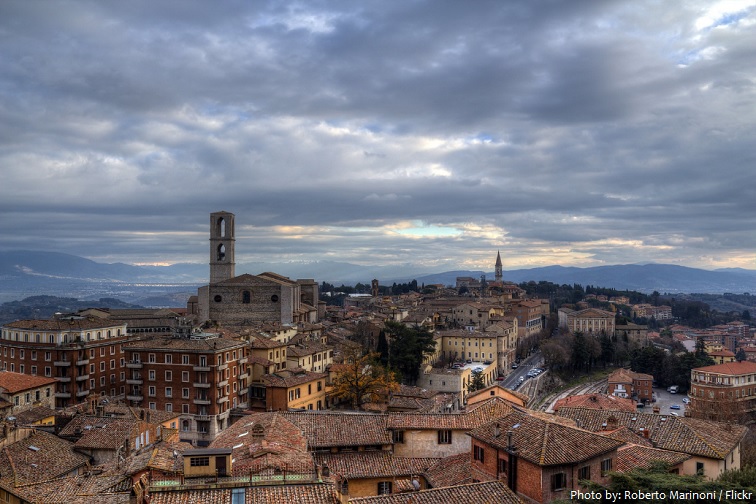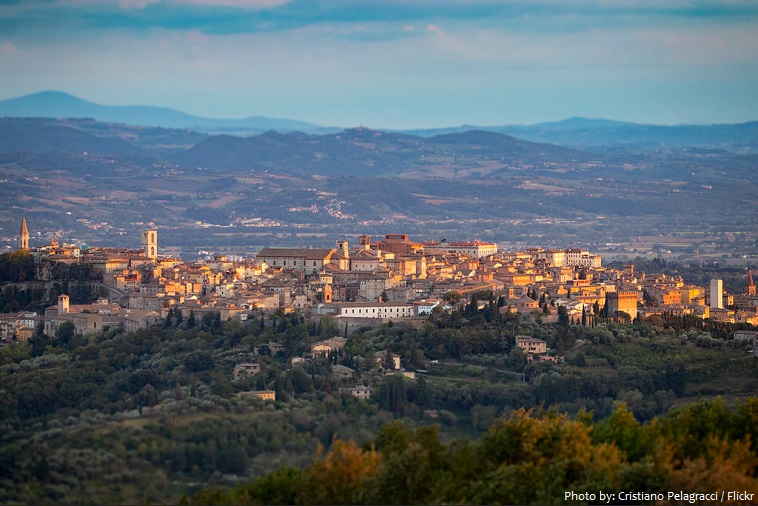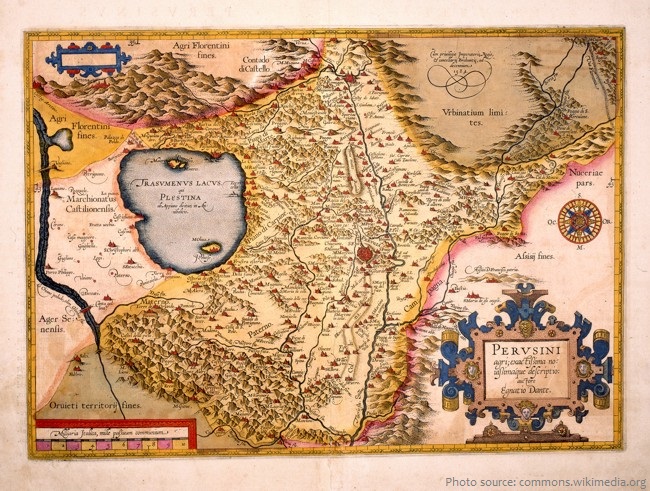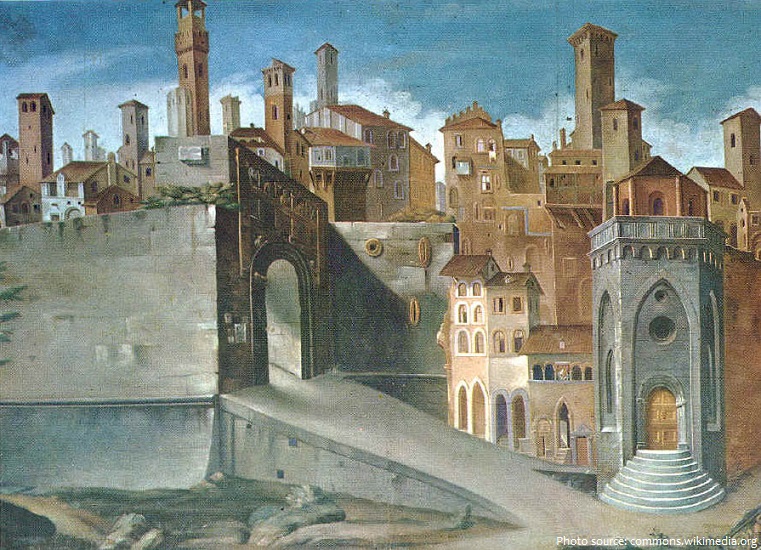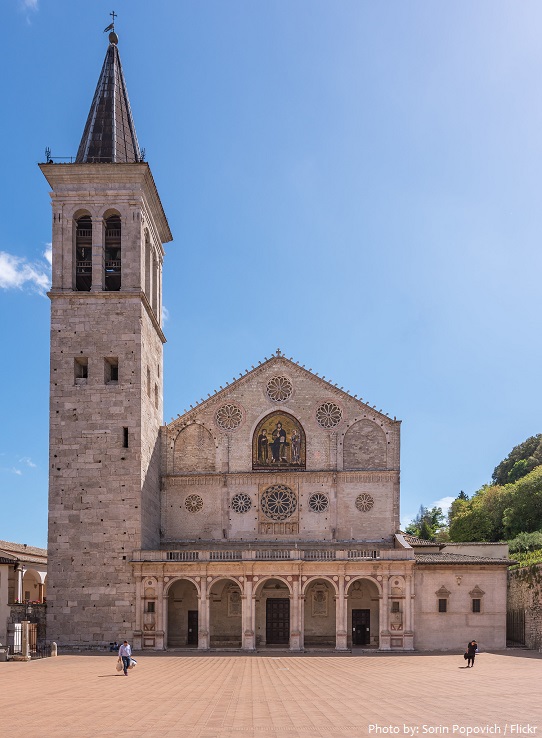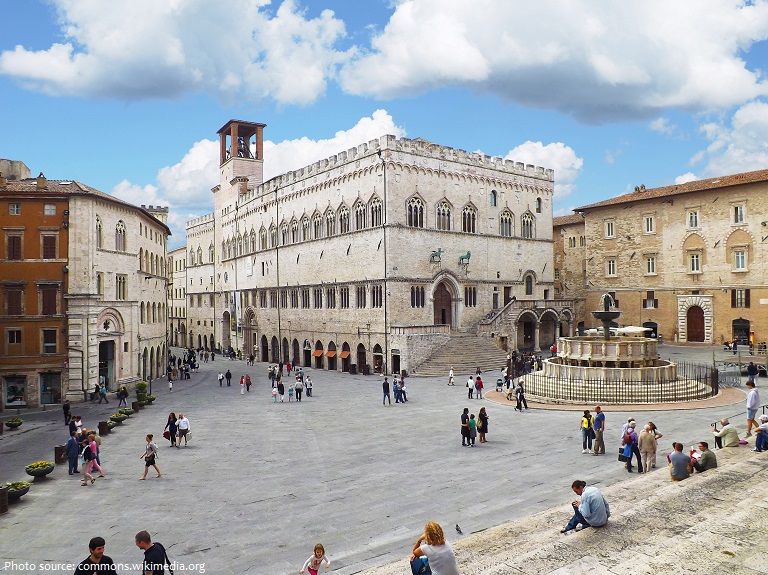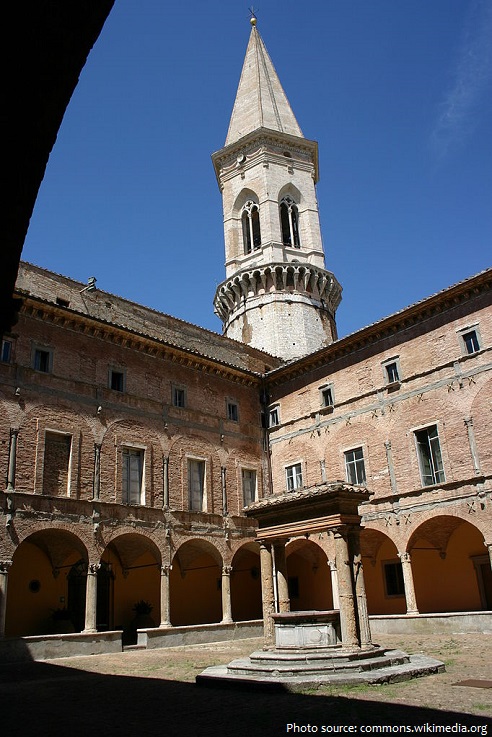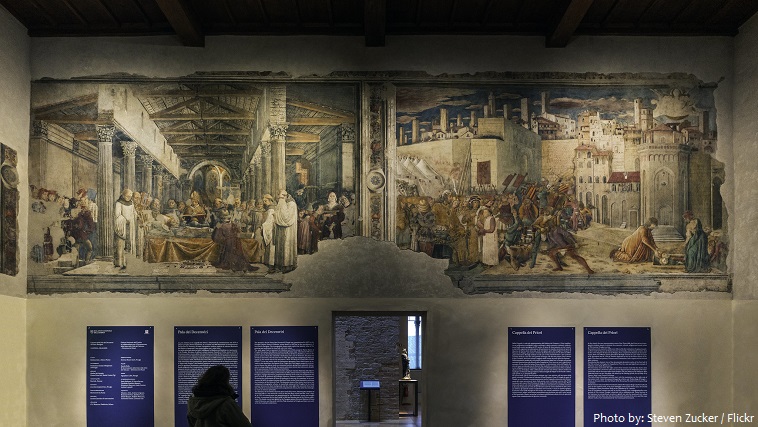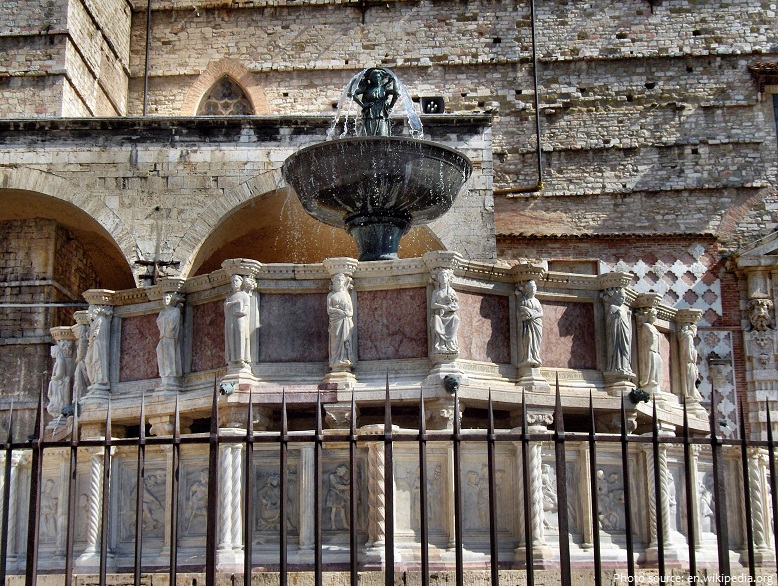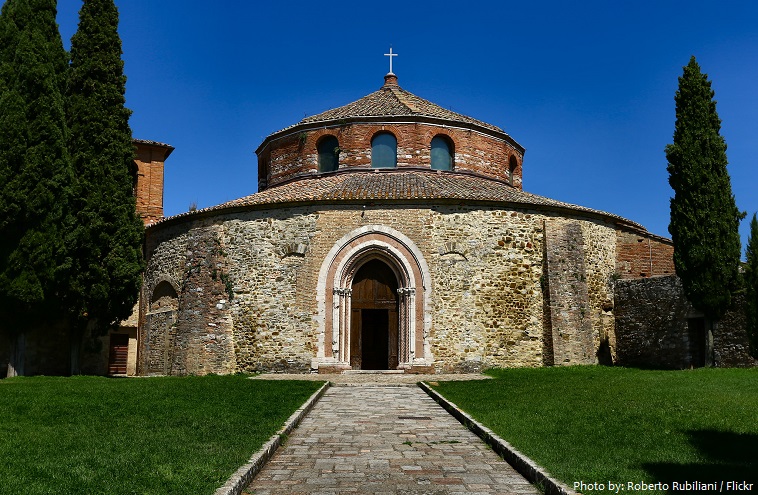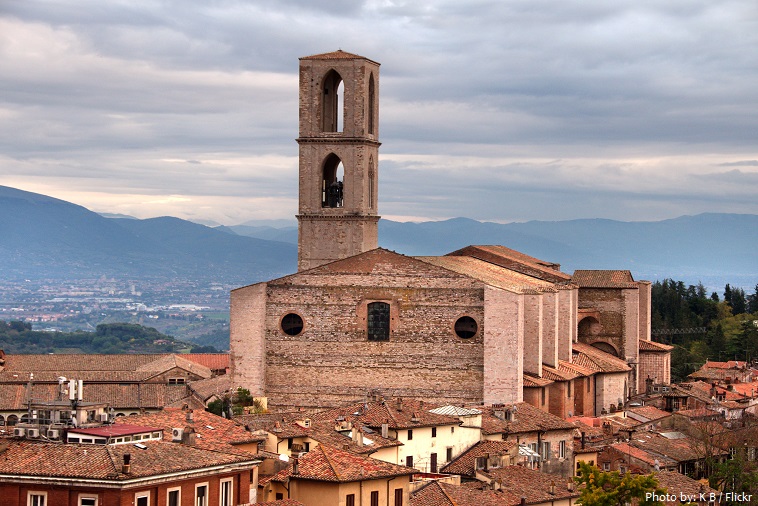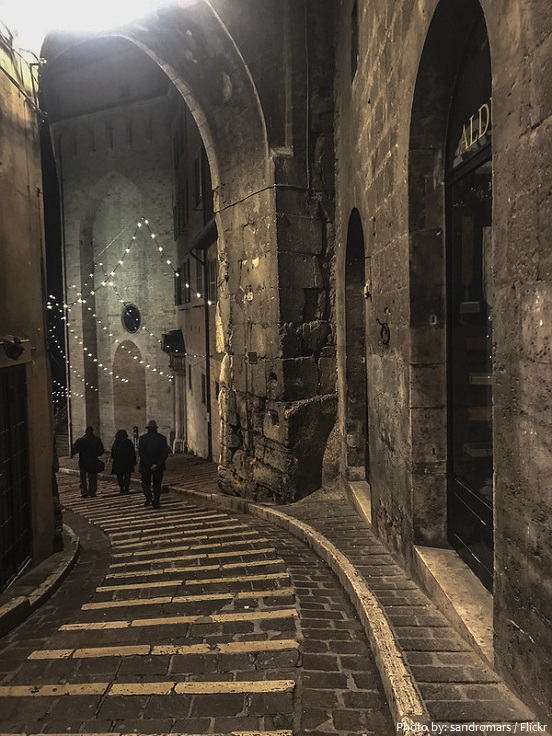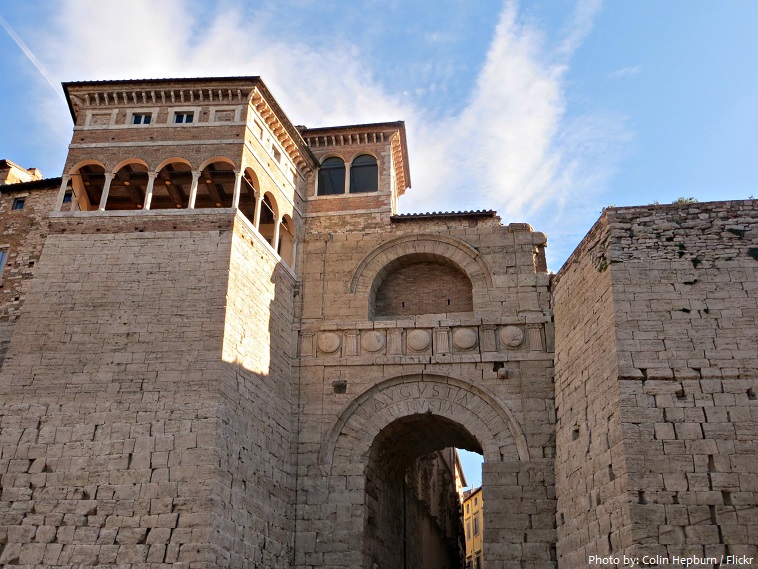Perugia is the capital city of both the region of Umbria in central Italy, crossed by the river Tiber, and of the province of Perugia.
It is situated on an irregular cluster of hills overlooking the Umbrian and central Tiber valleys and Lake Trasimeno.
As of August 2020, the population of Perugia is about 170,000 people.
The city covers a total area of 450 square kilometers (174 square miles).
The average altitude is 493 metres (1,617 feet) above sea level.
Founded by the Umbrians, it became one of the 12 strongholds of the Etruscan Confederation and belonged to Rome from 310 BC.
In AD 592 it became a Lombard duchy – subsequently, it was embroiled in many petty conflicts with neighbouring towns in which it usually took the Guelf, or pro-papal, side.
The condottiere Braccio Fortebraccio captured it in 1416, and later the rival Oddi and Baglioni families fought there for power before the town became a papal possession in 1540.
Perugia has a strong artistic tradition. In the 15th century it was home to fresco painters Bernardino Pinturicchio and his master Pietro Vannucci (known as Perugino), who would later teach the famous painter Raphael.
In June 1859 the inhabitants rebelled against the temporal authority of the Pope and established a provisional government, but the insurrection was quashed bloodily by Pius IX’s troops.
In September 1860 the city was united finally, along with the rest of Umbria, as part of the Kingdom of Italy.
During World War II the city suffered only some damage and was liberated by the British 8th army on 20 June 1944.
In recent decades, the city has been known as a university town, with the University of Perugia (about 34,000 students), the University for Foreigners (5,000 students), and some smaller colleges, also.
Perugia Cathedral is a Roman Catholic cathedral in Perugia, dedicated to Saint Lawrence. Formerly the seat of the bishops and archbishops of Perugia, it has been since 1986 the archiepiscopal seat of the Archdiocese of Perugia-Città della Pieve.
Piazza IV Novembre is located in the historic center of Perugia , and as Serafino Siepi wrote , “it is the most beautiful and oldest square in the city, central to the city” The asymmetrical square opens to the convergence of the five road axes that structure the medieval city and for its scenography it has represented the privileged place of urban functions in every age: here was the ancient forum and there are preserved monuments connected to the plant urban planning of the Etruscan-Roman city.
San Pietro is the name of a church and an abbey in Perugia. The monastery was created around 1002 over the former cathedral church, the early seat of Perugia’s bishops, existing since the early 7th century, although the first document citing the abbot is from 1002. In the following centuries the abbey increased greatly its power, until in 1398 it was burnt by the Perugini. The monastery reflourished with Pope Eugene IV. The abbey was temporarily suppressed by the French in 1799. The monks had aided the Perugine revolt of 1859 against the Papal government, and, after the Unification of Italy, the new government allowed them to remain in the Abbey.
The Palazzo dei Priori is a historic building in Perugia. As in other Italian medieval communes, it was the seat of the priori (“first citizens”). This magistrature was established in Perugia in 1303. Seat of the highest political authority of the town, the Palace was decorated over the years by the best artists.
The Galleria Nazionale dell’Umbria the Italian national paintings collection of Umbria, housed in the Palazzo dei Priori. Located on the upper floors of the Palazzo dei Priori, the exhibition spaces occupy two floors and the collection comprises the greatest representation of the Umbrian School of painting, ranging from the 13th to the 19th century, strongest in the fourteenth through sixteenth centuries. The collection is presented in 40 exhibition rooms in the Palazzo. On the second floor of the Gallery, there is an exhibition space for temporary collections, changed several times a year.
The Fontana Maggiore is a monumental medieval fountain located between the cathedral and the Palazzo dei Priori in the city of Perugia in Italy. It was made between 1277 and 1278 by sculptors Nicola Pisano and Giovanni Pisano. The hydraulics were by Fathers Bevignate and Boninsegna. The fountain was part of program of civic improvements begun in 1278 to celebrate the autonomy of the free commune of Perugia. On the twenty-five sides of the basin are sculptures representing prophets and saints, the labors of the months, the signs of the zodiac, scenes from Genesis, and events from Roman history.
San Michele Arcangelo, also known as Sant’Angelo, is a paleo-Christian temple in Perugia. The circular building dates to the 5th to 6th century, and incorporates corinthian capped columns from a prior pagan temple. The architecture is an early Romanesque with Byzantine influences in the chapel placement, but the circular temple is something seen in other ancient churches in central Italy. It is dedicated to the Archangel Michael, whose churches were often located in elevated spots.
San Domenico is a Roman Catholic basilica church in Perugia. Originally of gothic style, it was built in two phases between 1304 and 1458. It was reconstructed by Carlo Maderno in 1632 after a succession of collapses. Inside remains only part of its former, extremely rich, patrimony, dispersed after the Napoleonic requisitions and the post unity acquisitions by the state. It mainly consists of works dating to the XVII and XVIII Centuries, but there are also frescos of the XIV-XV Centuries in the transept and the chapel dedicated to Santa Caterina.
The Rocca Paolina was a Renaissance fortress in Perugia, built in 1540-1543 for Pope Paul III. It destroyed a large number of Etruscan, Roman and medieval buildings, including the Baglioni family’s houses in the burgh of Santa Giuliana as well as over a hundred tower-houses, gates, churches and monasteries. It turned the former streets of the historic city centre into underground passageways, which are now open to the public.
The Etruscan Arch or Arch of Augustus or Augustus Gate is one of eight gates in the Etruscan wall of Perusia, known today as Perugia. It is one of the only two surviving gates along with the Porta Marzia to the south. It was constructed in the second half of the 3rd century BC and was restored by Augustus in 40 BC after his victory in the Perusine War. Representing the best surviving and most monumental of the Etruscan city gates it opens on to the cardo maximus of the city, corresponding to the modern Ulisse Rocchi Road.
Perugia is a well-known cultural and artistic centre of Italy.
It hosts a world-famous jazz festival in the summer. The city also hosts the Eurochocolate Festival and the International Journalism Festival.
Perugia has become famous for chocolate, mostly because of a single firm, Perugina, whose Baci (“kisses” in English) are widely exported. Perugian chocolate is very popular in Italy. According to the Nestlé USA official website, today Baci is the most famous chocolate brand in Italy.
Perugia’s symbol is the griffin, which can be seen in the form of plaques and statues on buildings around the city.
